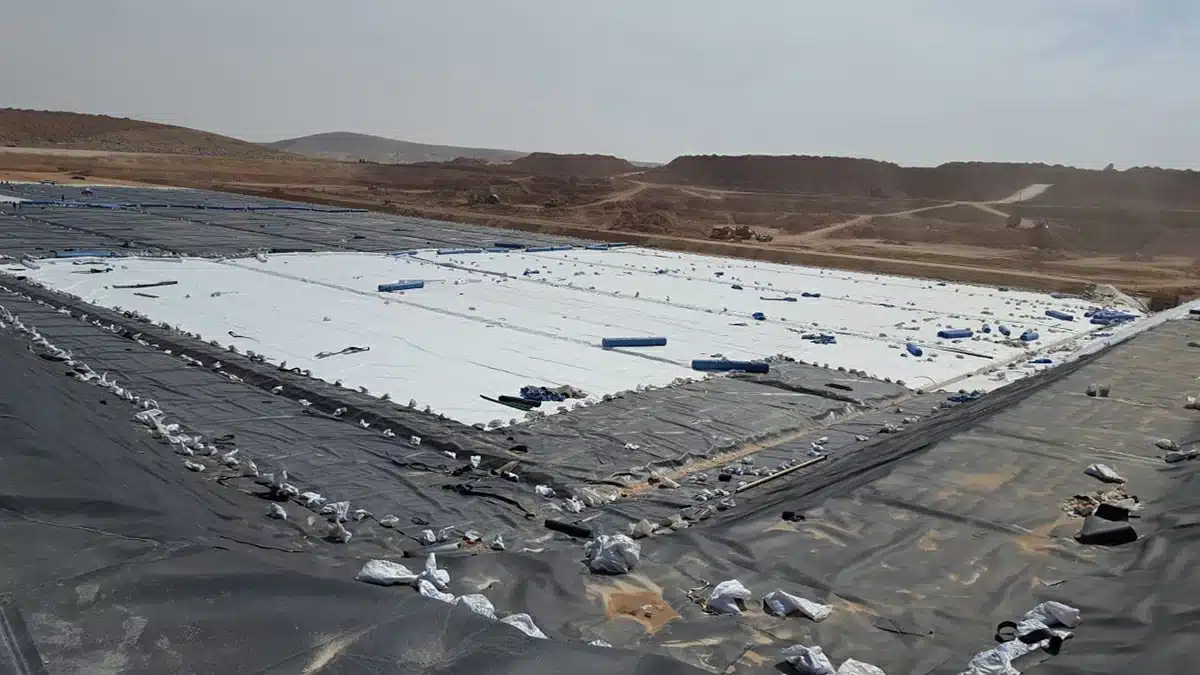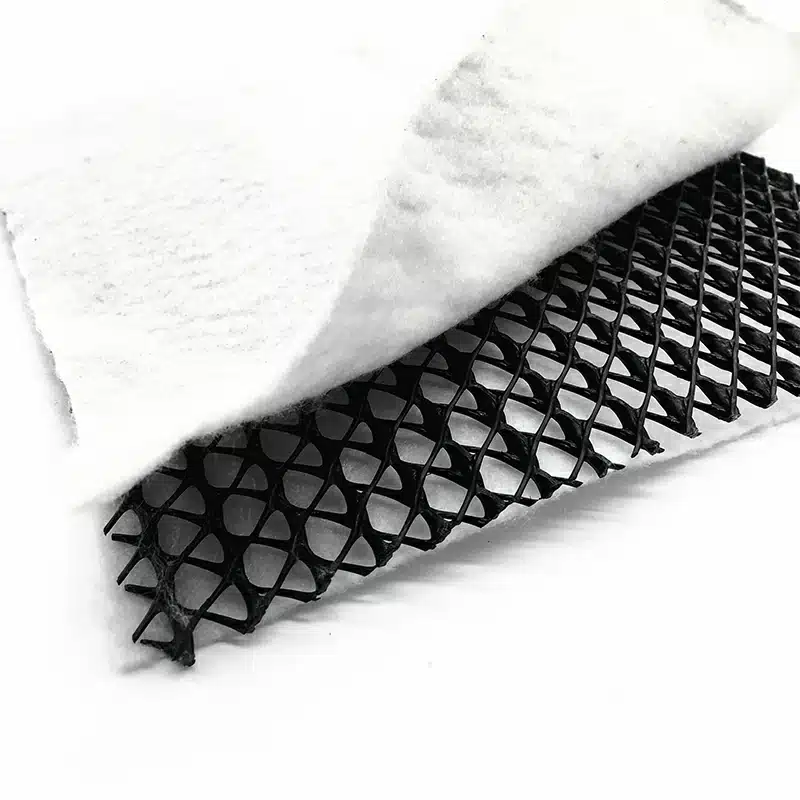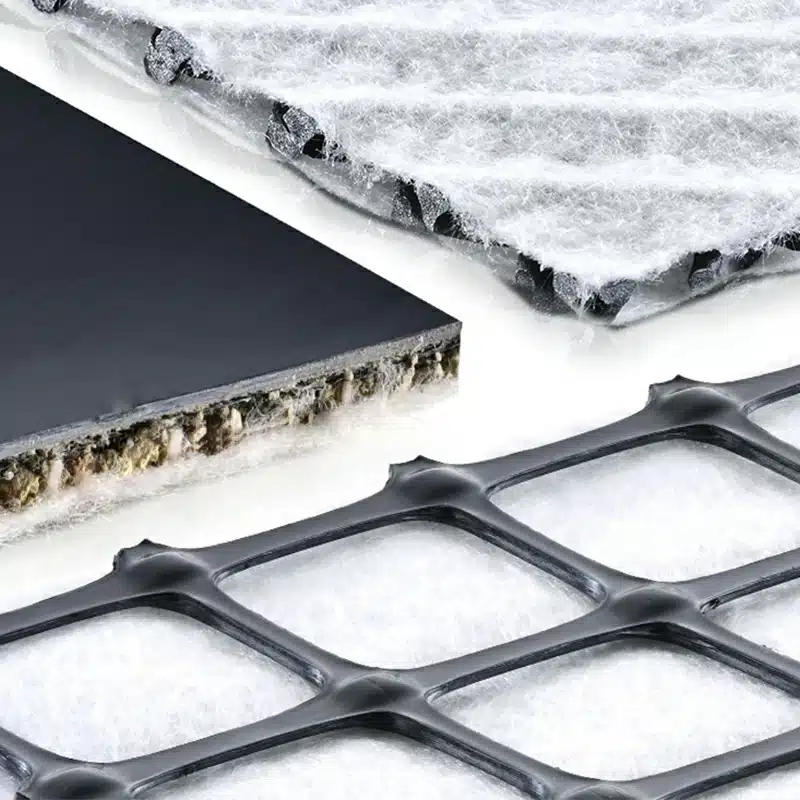+86-159 9860 6917
info@geofantex.com
geofantex@gmail.com
+86-400-8266163-44899
In the realm of civil engineering and landscape architecture, efficient water management is crucial for sustainability and structural integrity. The geocomposite drainage system emerges as a pivotal solution, marrying the benefits of geotechnical engineering with composite materials to offer unparalleled drainage and filtration capabilities. This popular science article delves into the intricacies of geocomposite drainage system installation, presenting a comprehensive guide that illuminates its significance, installation nuances, and the far-reaching implications for environmental management and construction projects.

What is a Geocomposite Drainage System?
A Geocomposite Drainage System is an engineered solution used to manage water flow and drainage in various construction and environmental projects. It typically combines different types of geosynthetics, such as geotextiles, geonets, and geomembranes, to provide efficient drainage, filtration, and protection. These systems are designed to facilitate the movement of water or other fluids away from structures while maintaining soil stability and preventing erosion.
Key Components of a Geocomposite Drainage System:
- Geotextile: Acts as a filtration layer, allowing water to pass through while retaining soil particles.
- Geonet or Geospacer: Provides a channel for water to flow horizontally or vertically, helping to drain water efficiently.
- Geomembrane: Often used to prevent water from seeping into undesired areas by acting as a waterproof barrier.
Applications:
- Landfills: To control leachate and prevent contamination.
- Road Construction: To enhance road durability by improving drainage.
- Retaining Walls: To reduce hydrostatic pressure and prevent water buildup.
- Basement Waterproofing: To channel water away from building foundations.
Geocomposite drainage systems offer high durability, increased efficiency in water management, and long-term performance across various civil engineering projects.
Why is the Geocomposite Drainage System Installation Considered Essential in Modern Construction?
The installation of a geocomposite drainage system is considered essential in modern construction due to several key benefits that improve the performance and longevity of various structures. Here are some reasons why it is vital:
- Effective Water Management: A geocomposite drainage system excels in managing water by efficiently channeling and draining excess moisture away from critical areas. This prevents water accumulation, which can weaken foundations, increase pressure on retaining walls, and cause soil erosion, ultimately protecting the structural integrity of buildings, roads, and other constructions.
- Enhanced Durability and Stability: By reducing the potential for water-related damage, these drainage systems help to stabilize the soil and prevent shifting or settling, particularly in areas with high groundwater levels. This contributes to the long-term durability of the infrastructure, minimizing the need for costly repairs or reconstructions.
- Prevention of Hydrostatic Pressure: In retaining walls and foundation designs, hydrostatic pressure can build up due to the accumulation of water behind the structure. Geocomposite drainage systems help to relieve this pressure by allowing water to escape, thus preventing cracks, leaks, or even complete failure of the structure.
- Versatile Applications: Geocomposite drainage systems can be installed in various construction projects, including landfills, tunnels, roads, retaining walls, and underground structures. Their adaptability to different environments makes them a versatile solution for modern construction needs.
- Cost-Effective Solution: Compared to traditional drainage methods, geocomposite systems offer a more cost-effective solution due to their ease of installation, reduced material requirements, and long-term maintenance savings. They require fewer resources and labor, lowering overall construction costs.
- Eco-Friendly Approach: Geocomposite drainage systems are often designed with environmentally friendly materials, contributing to sustainable construction practices. They help in reducing the environmental impact by minimizing soil erosion and preventing groundwater contamination.
In summary, the installation of geocomposite drainage systems is essential in modern construction for efficient water management, structural stability, cost-effectiveness, and sustainability. It ensures that construction projects maintain their integrity and functionality over time.

What are the Key Steps Involved in Installing a Geocomposite Drainage System?
Installing a geocomposite drainage system involves several key steps to ensure its effectiveness and longevity. Initially, the site must be carefully prepared, which includes excavating to the required depth and ensuring a stable, level base. The geocomposite material is then rolled out and cut to size, carefully overlapped at the seams to prevent leakage. Proper connection to a suitable outlet is crucial for water conveyance. Lastly, protecting the system with a layer of soil or another geotextile layer is essential to prevent clogging and damage.
What are the Challenges and Considerations in the Installation Process?
The installation of a geocomposite drainage system, while advantageous, presents certain challenges and considerations. Key among these is the selection of the appropriate type of geocomposite material, as different projects may require specific properties for optimal performance. The system’s design must also account for the expected water volume, ensuring adequate drainage capacity. Additionally, careful handling during installation is necessary to avoid damage to the material, which could compromise its effectiveness.
The installation of geocomposite drainage systems represents a leap forward in water management and sustainability practices within construction and environmental projects. Its adoption not only addresses the immediate concerns of water damage and soil erosion but also contributes to the broader goals of ecological preservation and resource efficiency. By understanding the essentials of geocomposite drainage system installation, stakeholders can harness the full potential of this innovative technology, paving the way for a future where development and nature coexist harmoniously.



Get Free Sample
We’ll respond as soon as possible(within 12 hours)






















